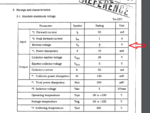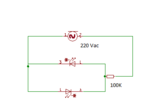julian403
Full Member level 5
Hello. I want to measure the distribution voltage signal, the 110V @60 Hz or the 220V @50Hz. To do that I will use an ADC. If I don't use opto acopler to make an isolation. Can I connect the battery ground and the signal neutral to have the same reference? It's possible that between a batery ground and the neutral of the 110V be a potential difference? I think no, but I'm not sure and to avoid any problem in the test I want to make this question here.
Regards.
Regards.

